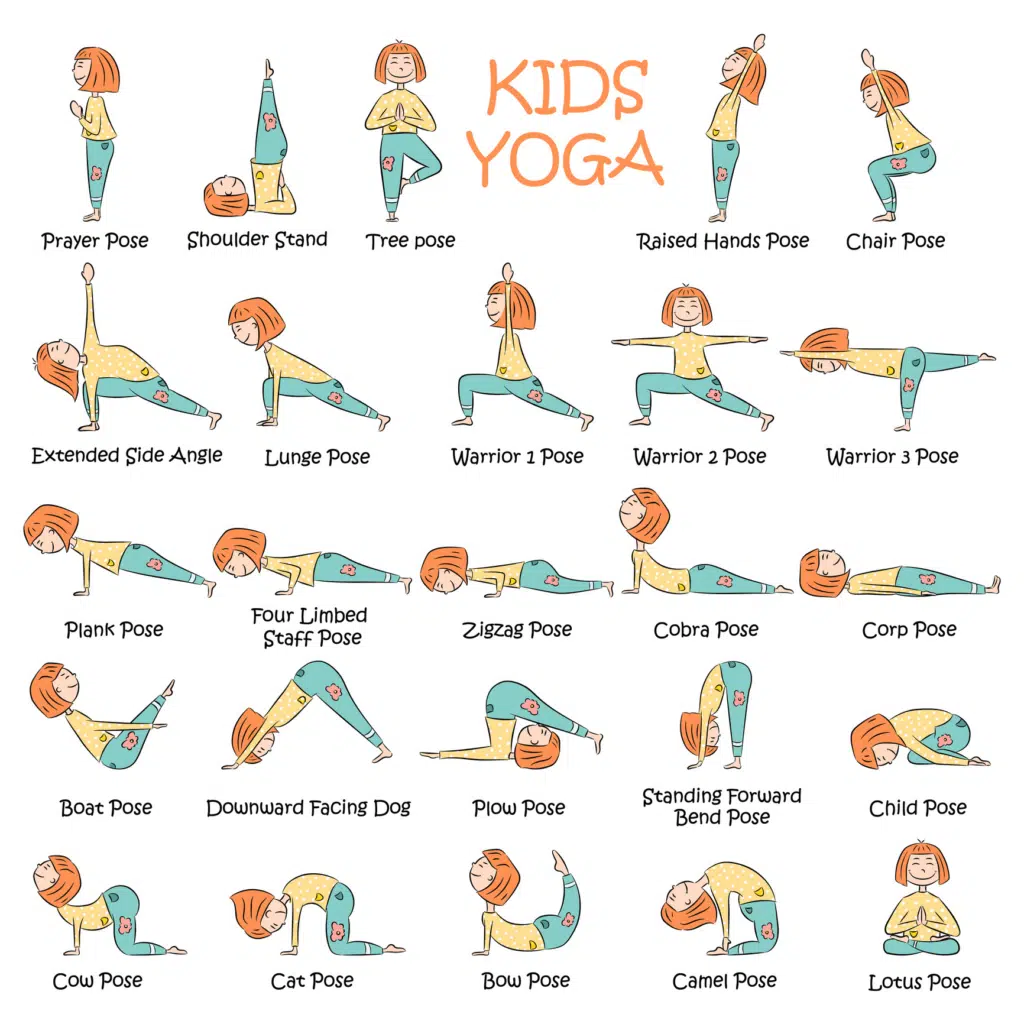Flexibility, strength, the ability to focus, and a sense of inner peace and calm: these are the benefits that yoga has to offer students of all ages. If you are looking to expand the offerings at your studio, here’s how to get started teaching yoga to kids.
Why Is Teaching Yoga To Kids So Important?
A 2017 study found that almost 8.5% of kids had participated in yoga in the previous 12 months. That’s up from around 3% in 2012. Why is yoga for kids on the rise? What do these kids (and their parents) know?
Yoga improves physical health
In addition to increasing balance and strength, yoga stretches for kids may help improve aerobic capacity. And according to Johns Hopkins University, yoga may be beneficial to overall heart health.
Yoga increases a child’s feeling of well-being
This simple intervention can improve a child’s sense of well-being, even for children who face the daily environmental struggles of poverty and conflict. Yoga reduces anxiety and helps regulate emotional responses in adolescents, too.
Yoga improves classroom performance
Research suggests that yoga for kids may improve stress management and behavior in school. Many schools are now incorporating yoga practices in the classroom.
Yoga is an effective mental health intervention
Mood disorders in children and adolescents are on the rise in the U.S. Yoga is an effective non-pharmaceutical intervention that helps reduce the symptoms of both anxiety and depression.
Teaching Yoga to Kids: 9 Tips
Teaching yoga to kids is not the same as teaching it to adults. While it’s tempting to teach the same poses using simpler language, that’s a surefire road to disaster.
It’s crucial to plan for the difference in learning style, attention span, and interest when teaching yoga to kids. Here are nine tips to help you do that.
1. Keep it short
While adults can work their way through a 90-minute vinyasa class, that’s just too long for kids. As a rule of thumb, keep classes between 20 and 30 minutes for kids under seven and between 30 and 45 minutes for kids eight and up. Adolescents between 12 and 17 can usually handle classes of about an hour.
Allow time for breaks and transitions, too.
2. Plan for “emergencies”
What will you do when the whole class decides they need to use the restroom at once? Plan ahead. For the littlest students, incorporate a whole-class trip to the bathroom before you begin.
Older students can manage themselves — assign a cue they can use if they need to leave the room (a nod or a hand motion) so they can take care of their needs and return without interruption.
3. Sequence wisely
Plan ahead — too much — when teaching yoga to kids. You never know how they will tumble through the door: tired, hungry, sad, excited, or with a mixture of emotions. Proper sequencing can help no matter how they arrive. If you are offering a series of classes, consider following the same format every time. This helps kids learn what to expect and to fall into the class when you’re ready to begin.
Adults might be able to come in and settle into position on their mats, but kids often need to get a little wiggly before they can begin (and adolescents often want to talk). Start with some easy movement and yoga songs for kids before moving into any kind of sequence.
Kids are great imitators, so a game of Simon Says using yoga poses is a good option. Another idea is to lead kids through some partner yoga poses, which can help them learn to work together. Again, consider your audience when planning. If you choose to do partner poses, leave plenty of time for explaining, giggling, demonstrating, and breaks.
End each class with savasana — corpse pose — guiding even the youngest students through a few deep, calming breaths.
4. Incorporate play
Play is a crucial part of child development, and it should be a major part of teaching yoga to kids. Incorporating yoga games for kids can help them get silly and move into their postures in a light-hearted way.

5. Use stories
Stories are a great way to incorporate yogic teachings into your yoga classes for kids. The stories of the monkey god Hanuman, Lord Ganesh, and Parvati are great entries into traditional yogic thought. You can also craft your own stories, incorporating poses as they fit.
6. Create themed classes
Themed yoga classes aren’t just for adults. Add more focus to your classes with themes for kids. Some ideas for yoga class themes for kids include:
- Shape-based yoga
- Animal yoga
- Ocean yoga
- Alphabet yoga
- Seasonal yoga
These themed classes can incorporate various kinds of breathwork, too. Lion’s breath and bumblebee breath are great for animal yoga, and ocean or ujjayi breath is a natural fit for ocean-themed classes. Breathwork offers significant calming effects and helps relieve stress and tension in the body.

Image courtesy: https://www.sclhealth.org
7. Expand your horizons
If your studio has a great outdoor space, consider offering a class or two outside. Research has demonstrated the measurable effect of greenspace on kids’ stress levels and emotional state. Take advantage of this and incorporate a class outside if space allows.
8. Make space for reluctant yogis
Not every child in your class is going to be as enthusiastic about yoga as you (or their parents) would like them to be. If a child chooses not to participate, give them the option of sitting quietly and observing, joining when they feel comfortable. They may never join, or it may just take a few moments for them to switch gears and mentally join the class.
9. Level up
If you are serious about adding a kids’ yoga flow (or any other style) for the littlest ones in your studio, it’s crucial that you invest in yoga for kids training for your teachers. Local yoga studios frequently offer this type of training, so check with Yoga Alliance to see if there is a training coming to a studio near you.
If not, an online training is a good place to start, especially if your teachers are already certified yoga teachers. Some options include:
Once your yoga teachers are trained and ready to go, make sure that you have insurance in place. In most cases, it’s just a matter of adding the discipline to their current policy, but this may vary from state to state.
Spread the Word with The Studio Director
Ready to start teaching yoga to kids? The Studio Director can help! Our yoga studio management software can help you get the word out with easy marketing and promotions. We can also help with online and seamless:
- Enrollment
- Waivers
- Waitlist management
- Billing
- Scheduling
Need virtual classes and a custom mobile app? We’ve got that, too, and so much more.
The Studio Director focuses on managing the day-to-day tasks of running your yoga studio so you can experiment with new types of classes. Reach out today for a demo or free trial!


